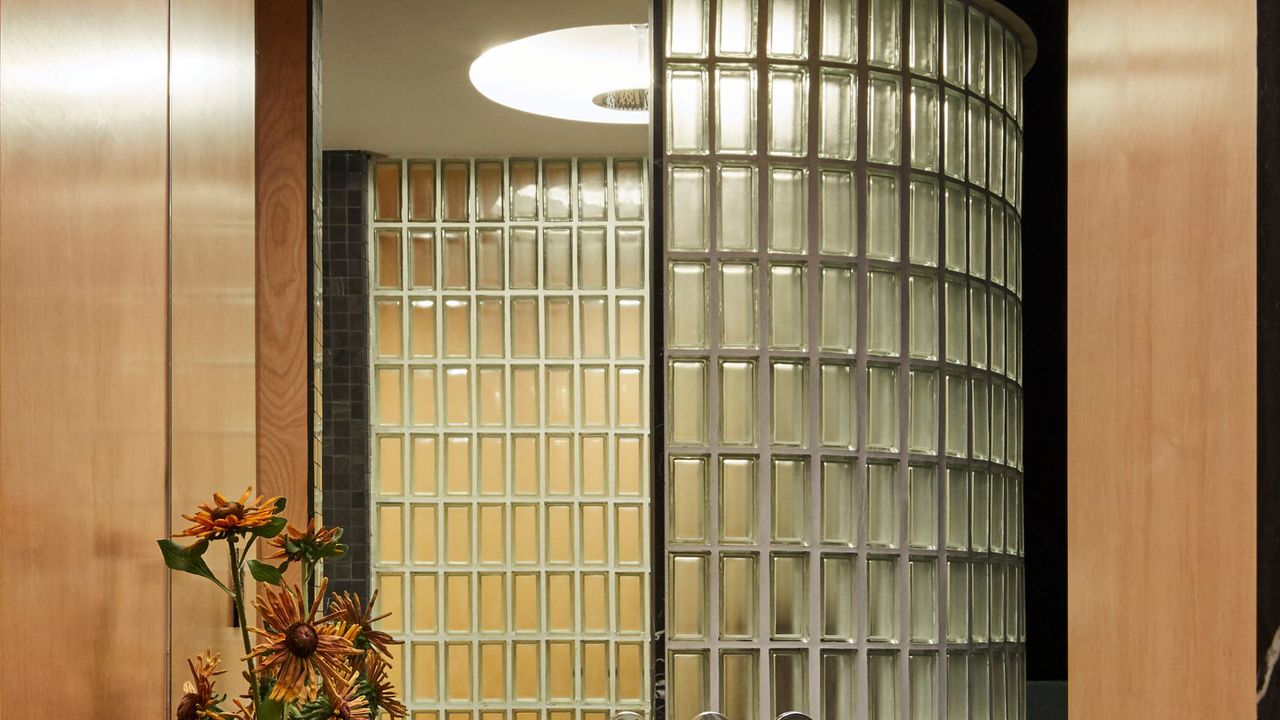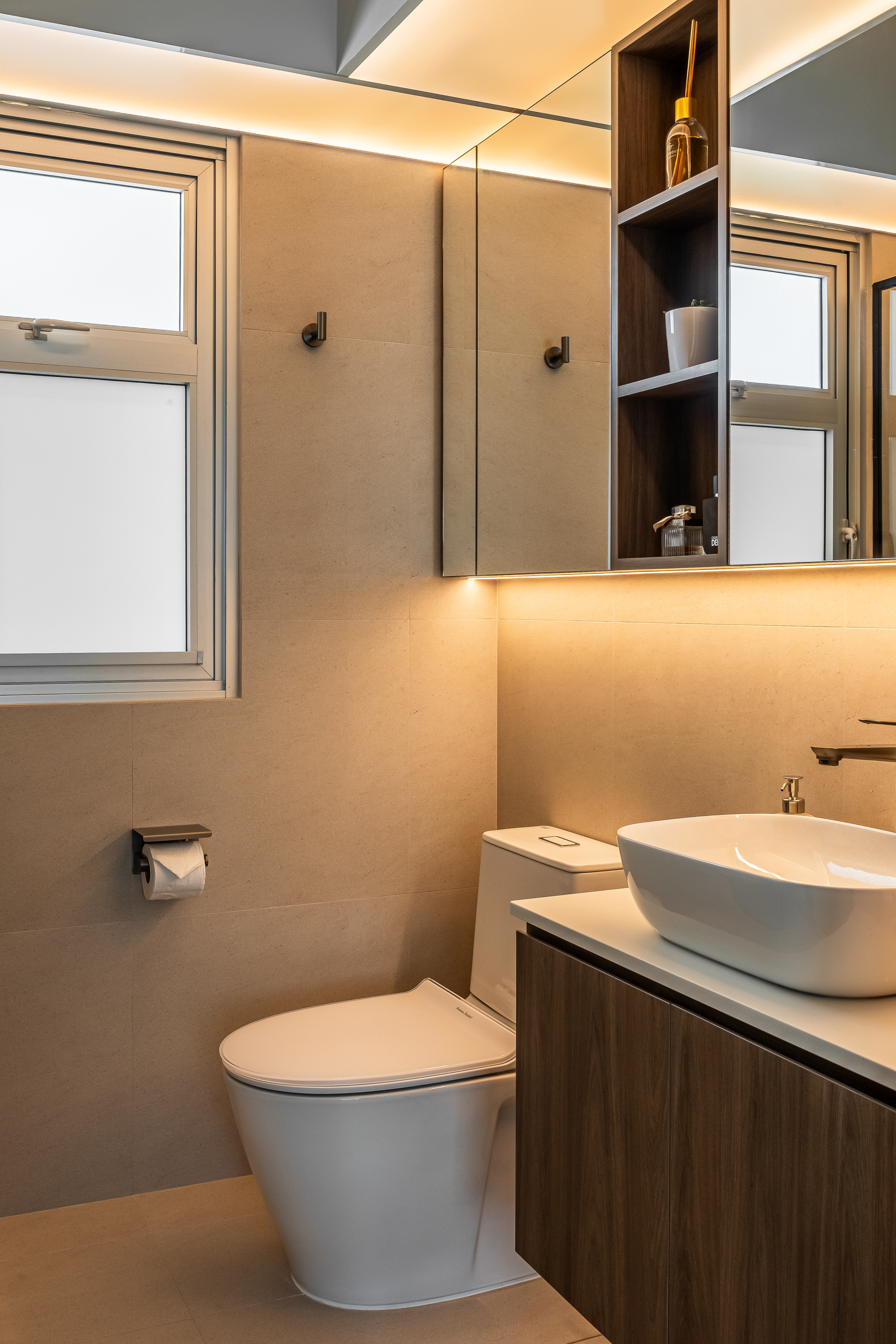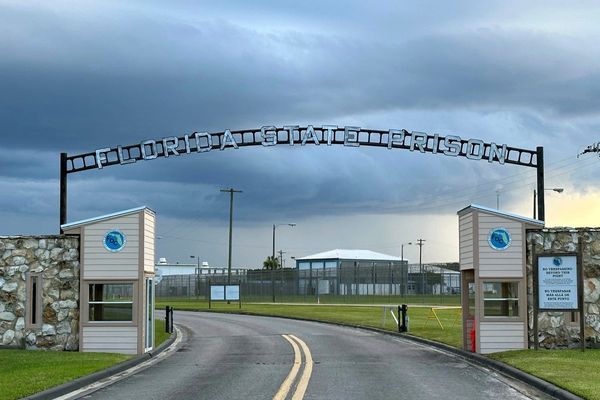
Not all bathrooms are blessed with abundant natural light. In reality, for many city dwellers in compact apartments, the bathroom often ends up being the most compromised space in terms of both square footage and a window to the outside world, but that doesn’t mean it can’t still capture the qualities of a deeply relaxing, open-to-the-outdoors retreat.
Case in point: artificial light wells in bathrooms — a growing trend championed by designers and lighting experts as a way to make the space more connected to nature and the world outside. These light wells are essentially LED lights or panels installed within ceilings, walls, or alcoves to project light from above, mimicking daylight and providing diffused illumination and creating a sense of openness. Often designed to resemble natural skylights or sun tunnels, these solutions are entirely artificial but surprisingly convincing.
This clever bathroom lighting technique can transform any space — whether small, narrow, or lacking a view — into one that feels instantly brighter and more inviting. Ready to boost both the mood and visuals of your tiny bathroom? Then jump on this trend — LED there be light!
What Are Artificial Light Wells?

LED light sources, discreetly hidden in strategic corners of the bathroom, can replicate the effect of natural light while in fact being purely artificial. These can range from ceiling to bathroom wall lighting integrations that work especially well in small bathrooms that are dark, under-lit, or lacking windows large enough to bring in sunlight.
“Artificial light wells are a game changer; they don’t just imitate daylight, they create atmosphere,” says Fontanella, founder and CEO of Argent Design. “When placed with intention, these illuminated voids can mimic the softness of a skylight or the glow of late-afternoon sun. We use tunable white LEDs that shift temperature throughout the day — from cool and energizing in the morning to warm and calming by evening. Beyond function, they add a sculptural element, like a slice of architectural light that lifts the ceiling and instantly elevates the mood of the space. The effect is almost cinematic: light as both design and feeling.”
Sometimes concealed, sometimes set at the very center of the bathroom, these light wells can create the illusion of an outdoor opening, blurring the line between indoors and out.
In this project by Zane Carter Architects, an artificial skylight enhances this sense of openness. “The bathroom is lit through a combination of a skylight, which brings in natural daylight, and integrated LEDs that take over when the light drops,” explains Sam Alawie, director at Zane Carter Architects. “The interplay between the two creates a consistent, layered atmosphere throughout the day.”
How Do These Enhance a Bathroom's Mood and Look?

Practicality aside, this big bathroom trend of artificial light wells can also set the scene for a spa bathroom or a deeply indulgent mood, especially since light settings can shift from bright to dim depending on your mood and the time of day. “These layered, ambient, rhythmic lighting schemes soften hard surfaces and bring a quiet sense of luxury to bathrooms,” says Fontanella.
Take this bathroom designed by Marta Shpachenko, founder and lead designer at My Bureau, for instance. She explains: “This bathroom was designed as part of a guest apartment. Our goal was to create a calm and relaxing atmosphere and to visually separate the shower zone from the rest of the space. We used a stretch ceiling with integrated LED lighting to simulate daylight. When this ceiling is the only source of light, it creates the effect of a glowing skylight or light portal, especially effective in bathrooms without windows. It makes the space feel calmer and more serene.”
You can also opt for colorful smart lighting to create a more upbeat atmosphere, particularly in the evening when the sun has set and the need for a “sunlit” bathroom is no longer there.
What Artificial Lights Work Best for Light Wells?

“LED strip lights are an effective choice for creating light wells because of their compact size, which allows them to fit seamlessly into narrow recesses and hidden coves where traditional bulbs cannot,” advises J.J. Chuan, co-founder of Shiok Lighting. “Unlike conventional lighting, LEDs are energy-efficient and run cool, making them suitable for continuous use without overheating. Their long lifespan also ensures that light wells, often designed in hard-to-reach areas, remain functional for years with minimal maintenance. Altogether, LED strips transform light wells into a practical and beautiful way of introducing natural-like illumination into a space.”
In this project, the LED bathroom lighting is cleverly hidden under cabinets and along the ceiling to create the effect of wall washing— a diffused glow typically achieved with natural light.
“We made use of the additional ceiling drop as a design feature to introduce soft, ambient lighting into the bathroom,” adds Chuan. “LED strips were installed within the box-up area, allowing us to extend the light source seamlessly across the space rather than being restricted to fixed lighting points. This creates a smooth, shadow-free wash of light that brightens the entire bathroom evenly, ensuring corners and vanity areas are well-lit. The recessed design also keeps the ceiling clean and uncluttered; a practical advantage in bathrooms where space is limited and a streamlined look is essential.”
Beyond LEDs, cleverly hidden sconces and light bars can also be used to mimic the effect of trickling natural light.
What Are the Different Ways to Create Artificial Light Wells?

Several, in fact. “The most impactful lighting is often the light you don’t see,” says Fontanella. “These LEDs can be integrated into unexpected architectural details — behind floating mirrors, under fluted stone vanities, or recessed into ceiling coves that make the space feel taller. We also use shadow gaps, lit from within, to give walls a sense of depth and movement. Even the base of a bath can glow subtly, creating the illusion it’s hovering above the floor.”
In this project by interior designer Darren Jet, the “light well” not only adds a sense of luxury but, positioned directly above the shower, gives the room an architectural presence, like a glowing lantern. Its effect is further enhanced with a glass-block enclosure. “The bathroom was designed with LED in many ways,” shares Darren. “For one, we decided to place a glowing LED sheet above the vanity, directly in front of a floor-to-ceiling mirror. Functionally, this creates an incredibly flattering, even glow of light when our client is getting ready. Aesthetically, it becomes a floating plane or orb of light that is doubled in the mirror, producing a cinematic effect of mystery in a smaller space."
"We continued to integrate LEDs throughout the bathroom," he adds. "In the shower, for instance, we built a raised, round cove encircling the central rainhead. At the flip of a switch, this cove emits a seductive glow that perfectly illuminates the shower without any harsh downlighting.”

Beyond the “skylight” effect, recessed lighting — a major lighting trend in its own right — is also an excellent way to introduce a natural light–like glimmer in the shower, evoking the sensation of bathing outdoors in nature.
“The LED light was installed discreetly, hidden behind a metallic trim finished in the same color as the wall fixtures,” explains Marianna Fiorin, founder of Marianna Fiorin Interiors. “This creates a soft wash effect on the Cipollino marble feature wall. On the ceiling, the LED is concealed above the soffit, right at the edge, so the fixture itself remains invisible while a gentle, diffuse glow emerges from the gap. We selected a warm color tone to enhance the sense of calm and relaxation, as warmer lighting always feels cozier and more inviting.”
The Nieva downlight features a compact, round design in white iron and aluminum. With a screwless quick-connect terminal, it’s ideal for bathrooms or kitchens, blending seamlessly into any setting.
This flush mount bathroom light delivers instant, flicker-free brightness that’s gentle on the eyes. With a sleek design and detachable bracket, it ensures quick, effortless wall or ceiling installation.
The WOMO Dimmable Long Linear Ceiling Light offers sleek, modern style in black, white, oak, or walnut finishes, with adjustable brightness, perfect for bathrooms and hallways.
FAQs
What Is the Difference Between a Skylight and a Light Well?
A skylight is a roof window that brings natural daylight into a space. A light well, on the other hand, may be an architectural shaft or an artificial lighting installation, either on the ceiling or walls, designed to replicate daylight. While skylights rely on sunlight and weather conditions, artificial light wells use LEDs or recessed spots to provide steady, diffused illumination.
What Is the Purpose of a Light Well?
The purpose of a light well is to bring light into spaces that lack sufficient natural illumination. Whether natural or artificial, it enhances brightness, creates openness, improves mood, and makes interiors feel more inviting, and open while also creating the feeling of being connected to the outdoors.
Artificial bathroom light wells create the feeling of daylight, enhancing the mood, atmosphere, and design of the bathroom. From LED cans, strips, to light bars, and sconces, several of the small, easy-to-hide lighting fixtures can be used to create this look.







